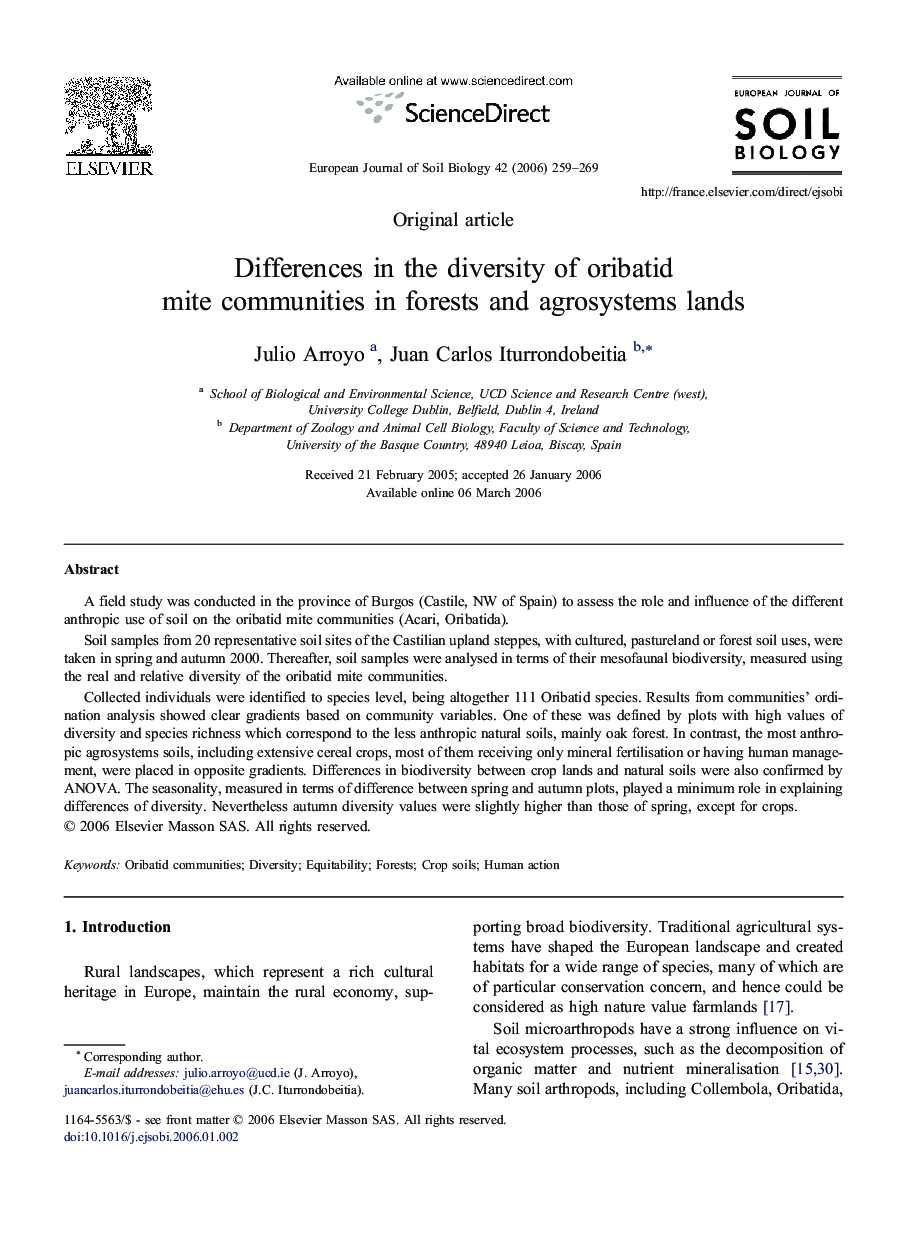| Article ID | Journal | Published Year | Pages | File Type |
|---|---|---|---|---|
| 4392523 | European Journal of Soil Biology | 2006 | 11 Pages |
A field study was conducted in the province of Burgos (Castile, NW of Spain) to assess the role and influence of the different anthropic use of soil on the oribatid mite communities (Acari, Oribatida).Soil samples from 20 representative soil sites of the Castilian upland steppes, with cultured, pastureland or forest soil uses, were taken in spring and autumn 2000. Thereafter, soil samples were analysed in terms of their mesofaunal biodiversity, measured using the real and relative diversity of the oribatid mite communities.Collected individuals were identified to species level, being altogether 111 Oribatid species. Results from communities' ordination analysis showed clear gradients based on community variables. One of these was defined by plots with high values of diversity and species richness which correspond to the less anthropic natural soils, mainly oak forest. In contrast, the most anthropic agrosystems soils, including extensive cereal crops, most of them receiving only mineral fertilisation or having human management, were placed in opposite gradients. Differences in biodiversity between crop lands and natural soils were also confirmed by ANOVA. The seasonality, measured in terms of difference between spring and autumn plots, played a minimum role in explaining differences of diversity. Nevertheless autumn diversity values were slightly higher than those of spring, except for crops.
